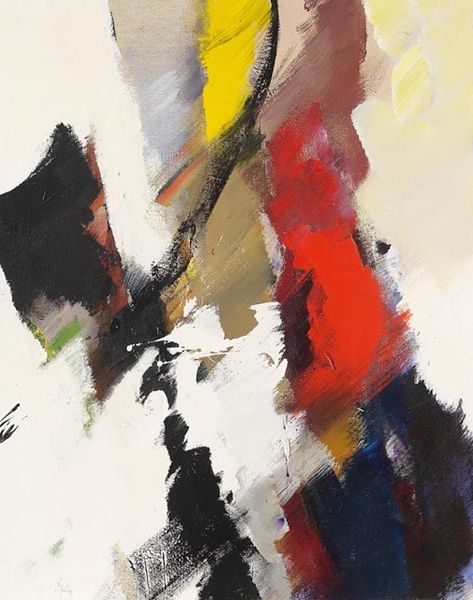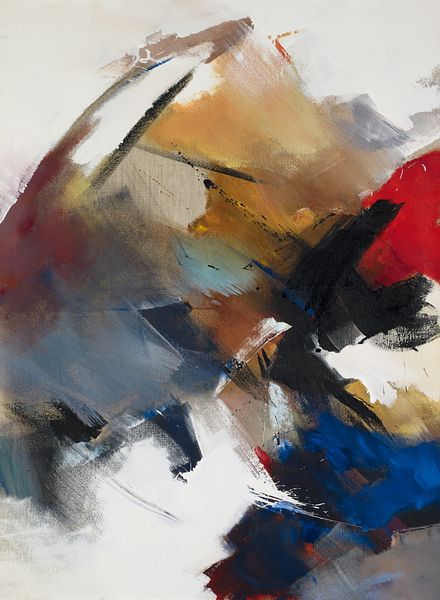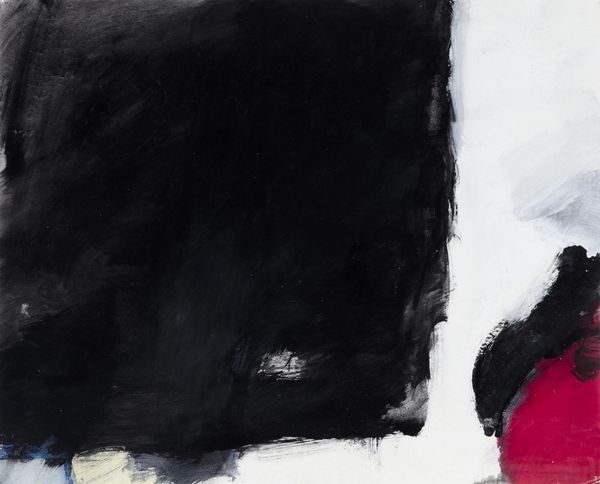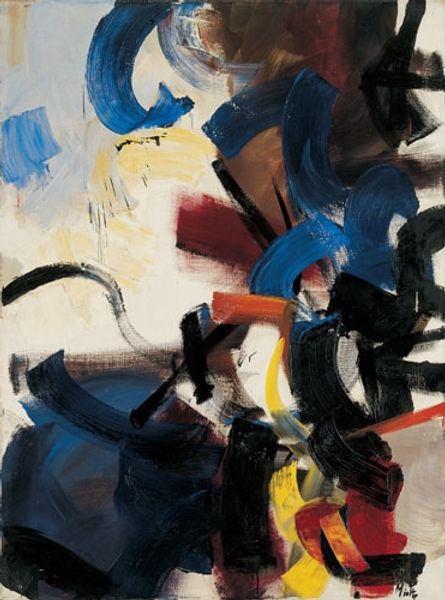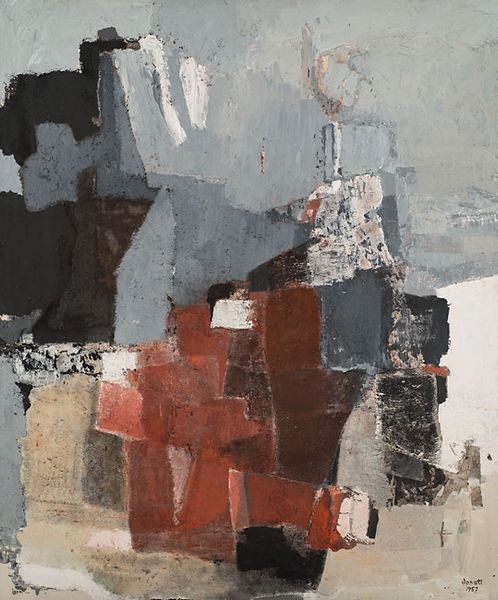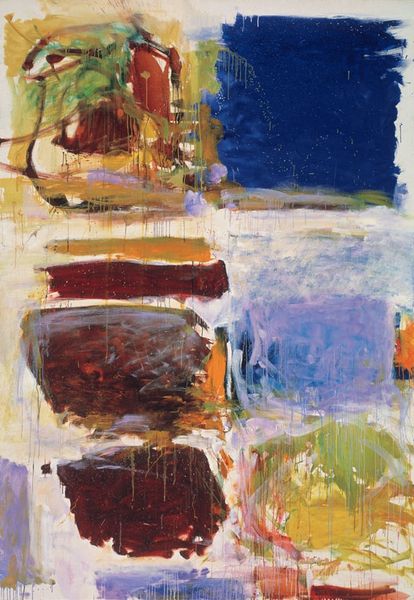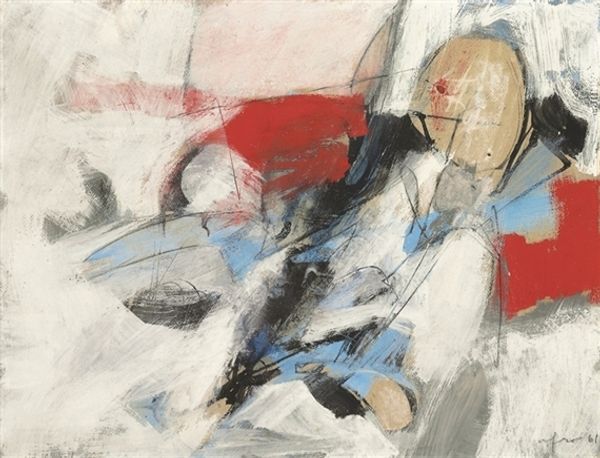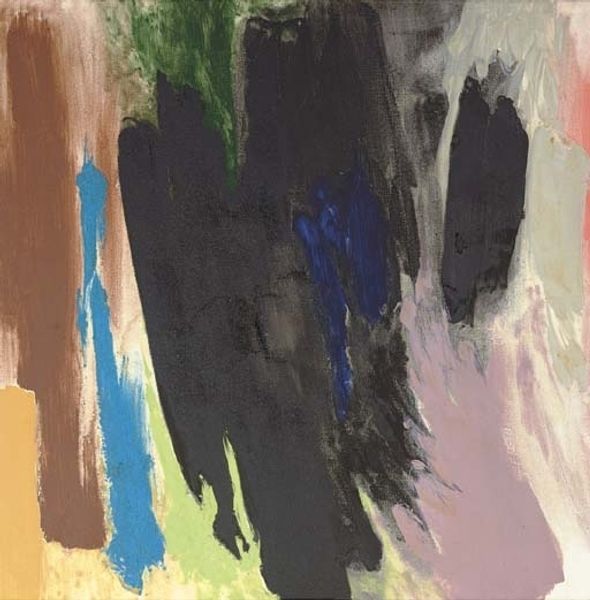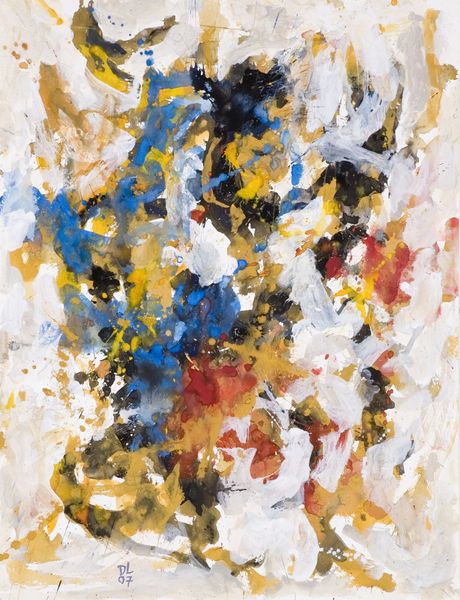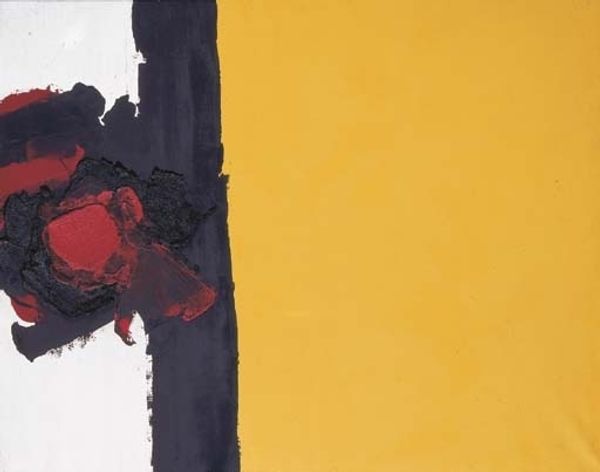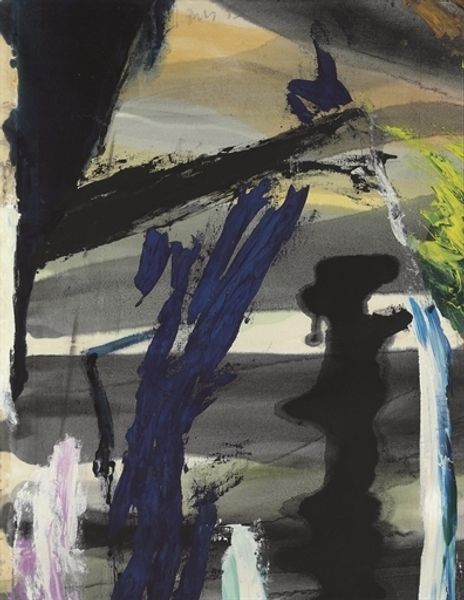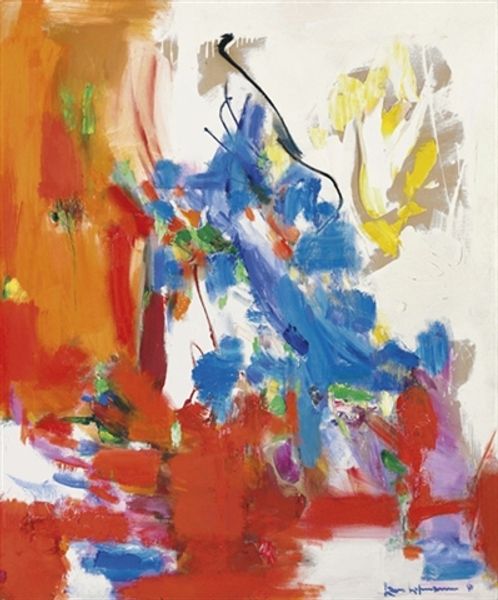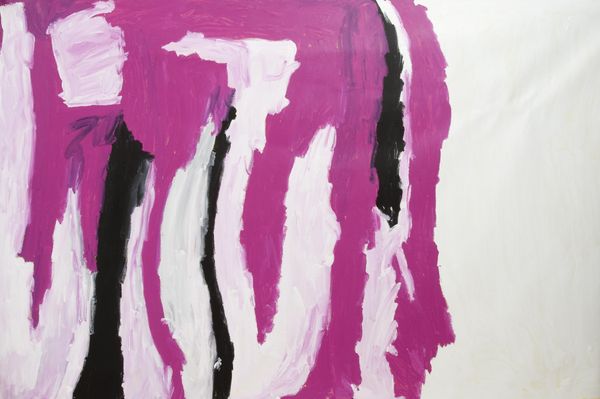
Copyright: Jean Miotte,Fair Use
Editor: Here we have Jean Miotte's Untitled, created in 1985 with oil paint. Looking at it, I feel a real tension between the darkness and light, almost like a struggle playing out. How do you interpret this work? Curator: Indeed. Miotte’s visual language here speaks of something primal, something just beneath the surface of our conscious awareness. Look at the interplay between that dominating black form and the bursts of red and white. Doesn’t it evoke a sense of internal conflict, a psychological drama laid bare? What feelings arise when you focus on the brown area just beneath that central void? Editor: I see a kind of grounding element, like the darkness is pressing down, but the brown is anchoring it, or perhaps decaying to give way for new brighter colors. Curator: Precisely! Consider that Miotte came of age in the wake of World War II. These abstract shapes, these powerful juxtapositions of color and texture, they served as symbols of the trauma and rebuilding occurring within Europe, but more broadly a meditation of humanity and its path toward healing. Can you see any evidence of traditional iconography, shapes or palettes, repeated, perhaps unconsciously? Editor: I do see forms reminiscent of expressionistic landscapes and dark ages iconography; broken curves and angular forms that are at once figures and part of an abstract composition, giving it both personal and social context. Curator: Precisely. The fragmented symbols resonate on both a personal and universal scale, creating a cultural memory. This work is a profound meditation. Editor: This was so insightful! It’s amazing how the artist channels raw feelings into symbols we can still connect with today. Curator: Absolutely, the artist's intuitive work resonates through symbols. This shows continuity of art in its capability to record events and express feelings that all humans have, even across time.
Comments
No comments
Be the first to comment and join the conversation on the ultimate creative platform.
